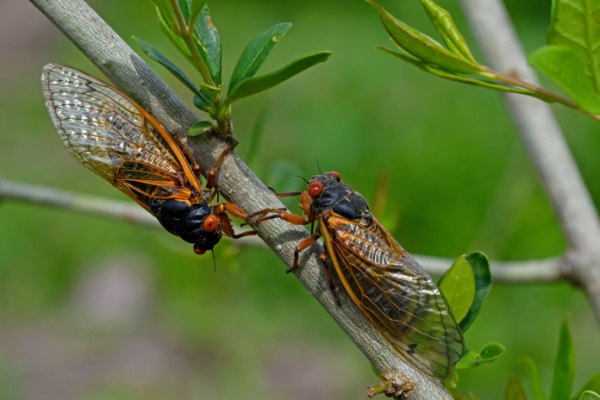 Cicadas 2025: Billions of Brood XIV will Soon Emerge, is your State on the List?
Cicadas 2025: Billions of Brood XIV will Soon Emerge, is your State on the List?
Get ready for an insect phenomenon that has been 17 years in the making. Starting this spring, when temperatures are warm enough, parts of the eastern United States will witness the emergence of Brood XIV periodical cicadas. After spending nearly two decades underground, these cicadas are set to emerge in droves, creating a spectacle that will be both seen and heard.
As AccuWeather reports, Brood XIV, the second-largest periodical cicada brood, last emerged in 2008. Since that time, the nymphs have been living underground, feeding on tree root sap and biding their time until their next emergence.
When and Where are the Cicadas Expected to Arrive?
Depending on the location, the emergence is expected to begin in mid-May and last through late June, according to the University of Connecticut. The trigger for their appearance is soil temperature reaching 64 degrees Fahrenheit, 8 inches beneath the ground.
Cicada nymphs first create exit tunnels in the ground and then emerge, searching for something to climb like a tree or a fence. Then they molt, allowing the adult cicadas to emerge. The males then begin singing to attract the females. After being active for several weeks, the females lay their eggs, the adults die, and the nymphs return underground to wait until their next emergence, over a decade later.
As opposed to annual cicadas, periodical cicadas only emerge once every 13 or 17 years, making their appearance a rare event. Brood XIV cicadas are distinguished by their black and orange coloring, unlike the green annual cicadas that appear every summer.
Brood XIV are expected to emerge this year in Georgia, Kentucky, Indiana, Massachusetts, North Carolina, New Jersey, New York, Ohio, Pennsylvania, Tennessee, Virginia and West Virginia.
The last time this brood emerged was in 2008, making their cyclical return a highly anticipated event for entomologists and nature enthusiasts alike. “That noise level can get up to a hundred decibels,” Dr. Jim Fredericks with the National Pest Management Association told AccuWeather. “The sound of a passing jet plane, the sound of a lawnmower – this is really loud because it’s literally hundreds of thousands or millions of individuals singing at the exact same time.”
Are Cicadas Dangerous?
While the sheer number of cicadas and their loud mating calls might be a nuisance, experts assure that they pose no threat to humans or pets.
“People tend to be terribly afraid of insects, and these guys are big, but they are harmless,” Jody Gangloff-Kaufmann, an entomologist and associate director at the New York State Integrated Pest Management Program at Cornell University told ABC News. “They don’t bite, and if your pets ingest them, they will be fine.”
Do Cicadas Cause Damage to Trees, Plants and Grass?
While cicadas can cause minor damage to young trees by breaking branches to lay their eggs, they are generally beneficial for the ecosystem. “Cicadas are beneficial to tree health because the holes they create can lead to better moisture drainage into the soil and some natural pruning,” said Tamra Reall, an entomologist at the University of Missouri.
For those who are fascinated by this natural event, Cicada Safari, a citizen science program, allows people to upload their sightings and contribute to tracking these insects. As for the future, entomologists are already looking ahead to 2076, when Brood XIX and Brood XIV will have a joint emergence, creating an even more spectacular – and noisy – event.
So, if you find yourself in the eastern U.S. this spring, take a moment to appreciate the incredible natural phenomenon. Just remember to cover your young trees with fine netting to protect them and maybe invest in some earplugs!
—
Photo Credit: Michael G McKinne / Shutterstock.com


